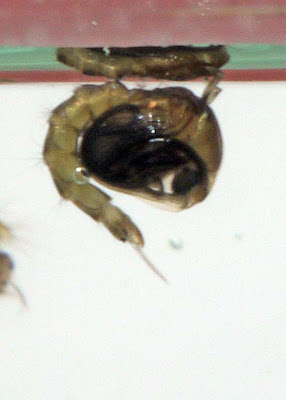The colour of a greenbottle fly Lucilia sericata is undeniably exquisite - an iridescent, metallic shade of green that, if it graced a beetle or maybe a damselfly, would be unreservedly admired.
In sunlight the exoskeleton of the fly almost looks like polished brass.
Unfortunately there's another side to greenbottles that's rather less attractive but nonetheless fascinating - and if you don't want to know about it, read no further..........
...........but, on the other hand, if you can't contain your curiosity, read on .......
When an animal dies it's often a greenbottle that is the first fly to find the corpse, which it can detect over long distances. The rate of development of the eggs that it lays and the maggots that hatch have been well calibrated in laboratory studies, so forensic entomologists can say with some accuracy how long a body has been dead by looking at the stage of development of the maggots, which take around four days to develop (depending on temperature) before they crawl out of the corpse and pupate in the soil nearby.
Greenbottle maggots feed on dead tissue and bacteria that contaminate it, so they have been used medicinally in maggot therapy, where sterile maggots preferentially eat necrotic tissue around wounds and also secrete a natural antibiotic, speeding up the healing of wounds. I don't know whether this treatment is available on the National Health Service yet but the NHS has certainly taken an interest in it and its use was debated in the House of Commons in 2007.
If you click here you can read a scientific paper that describes the history of maggot therapy and its modern applications. You can also read a Wikipedia article on the subject by clicking here.








































































